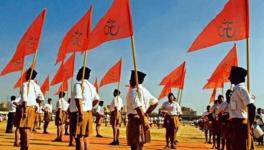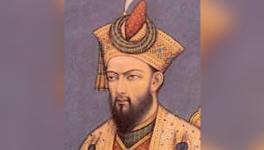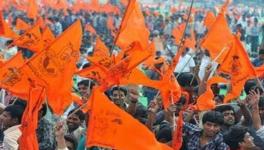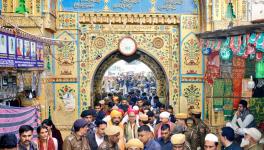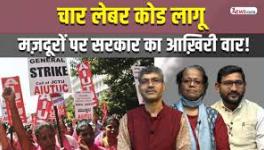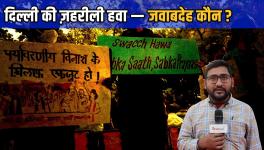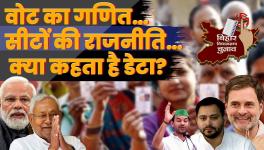Saffron Nationalism and New Media
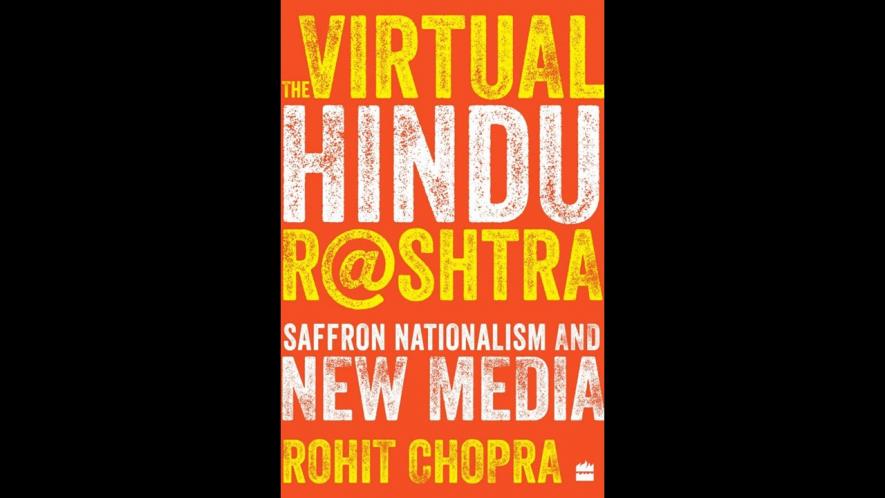
Academic Rohit Chopra's Virtual Hindu Rashtra: Saffron Nationalism and New Media (Harper Collins, 2019) traces the origins and development of the presence of the Hindu Right on Internet from the 1990s. Even in it's initial stages, Chopra argues, the Hindu Right's presence on the internet had a reach, spread and comprehensiveness that was unmatchable, for the small fraction of Indians, mostly diasporic, who had the privilege of access to technology at the time were mostly Hindutva adherents. Chopra analyses the trend by placing it alongside the strong presence of a "Hindu-identity" consciousness amongst diasporic Indians and how Hindutva and identity politics continue to offer this community an easy template to distinguish themselves from other Indians. The book also contextualises the relationship between Hindu nationalism and new media and also looks at global political trends like the phenomenon of fake news. An important book of and for the times.
Republished here are significant excerpts from the chapter Hindu Nationalism and New Media in Pax Modica of the book.
The Weaponising of Social Media in Pax Modica
Every form of social media, Twitter, Facebook, and WhatsApp (a messaging network, that for convenience, we may treat as social media) is used by the Hindu Right in specific ways, even as combinations of these media forms are also deployed in concert with each other. Twitter is primarily used for tactical purposes. It is used both as offense and defence, to divert attention from either a domestic event or occurrence that may reflect poorly on Modi or his government, to shut down criticism from the international press or critics, well-known or otherwise, and to intimidate and harass critics of the government. Facebook and WhatsApp overlap a little more in the modes in which they are used by the Hindu Right. Facebook, with its vast reach, is used to normalise the ideology of the Hindu Right, to entrench as hegemonic common sense both the classic tenets of Hindutva and its new-found obsessions, such as the discourses of ‘inner engineering’ promoted by godman Jaggi Vasudev or the notion of vegetarianism as trendy, promoted by People for the Ethical Treatment of Animals (PETA) and Hindu student associations in universities in the US. WhatsApp, sealed by encryption, enables the BJP to access closed loops of communication. For the Hindu Right, Twitter’s value lies in helping it achieve tactical and shortterm objectives. Facebook serves as a counter-archive of alternate accounts of Indian history and memory. And WhatsApp is best understood as serving medium-term objectives such as changing the political climate for an upcoming election, creating a scare about a planned government takeover of Hindu temples, or a proposed Congress-plan to fund mosques at the expense of Hindu places of worship. Each network or platform also serves as an instrument of fake news.
Twitter: Discipline and Punish
Twitter’s use as a disciplinary and punitive mechanism for the Hindu Right became apparent early on in the Modi administration’s rule. Following the lynching of a Muslim man, Mohammad Akhlaq, in Bisara, near Dadri in Uttar Pradesh by a Hindu mob of his fellow villagers in 2015, over fifty prominent artistes and intellectuals returned awards that they had received from the government. The ‘Award Wapsi’ movement, as it came to be known, was to protest the rise of Hindu majoritarian violence, which, the artistes and intellectuals contended, had been implicitly encouraged by the Modi government. It was also meant to condemn the Modi government’s refusal to take action against such vigilantism. Modi’s own silence was seen, at best, as a refusal to condemn these violent groups for fear of losing an important part of his base, and, at worst, as a tacit endorsement of the actions of extremist Hindus. In its idiom, the protest of the artistes and intellectuals was not particularly new or original. India has a rich tradition of protest and can boast a highly developed sense of political consciousness among large cross-sections of its citizens, regardless of whether they may be formally educated or not. Whether it is mobilising idioms of Gandhian resistance, as Anna Hazare claimed to have done in his fast for a Lokpal Bill, refusing to accept salaries, as contract workers in Tamil Nadu will often do if they are paid less than promised, or more extreme expressions of anger like burning buses, protest is an integral part of life in India.
Modi’s supporters and Hindu right-wingers had freely and fully exercised their right to protest against the Congress-led government that preceded NDA-2. BJP politicians like Smriti Irani had led public protests on issues like price hikes. Online, Modi loyalists had been relentless in their criticism of then Prime Minister Manmohan Singh, from nicknaming him ‘Maun mohan’, or ‘mute,’ to openly mocking his weakness and reliance on Congress matriarch Sonia Gandhi. Yet when it came to the artistes protesting the culture of violence enabled by the BJPled government after 2014, Modi supporters subjected them to vicious abuse, online and otherwise, indicating that in their view Modi was above criticism and deserved to be treated differently from all other politicians. From garden-variety trolls to prominent supporters of the new political dispensation, including actors Anupam Kher and Paresh Rawal, an online mob in unison accused the award returnees of being anti-national and politically motivated against Modi and the BJP46. Accused of sympathising with the Congress, the protesters, in a creative cooption of the term ‘intolerance,’ were blamed by Modi devotees for being intolerant toward Modi because of an inherent political bias.
The same conflation of Modi with the nation, and the same oversensitivity and angry response on Twitter was seen in the social media and Twitter attacks on Bollywood superstar Aamir Khan, a complex project in which the Modi government itself was complicit. At an award function in November 2015, Khan voiced his concern about the rising tide of intolerance in the country and mentioned that his wife Kiran, who happens to be Hindu, had suggested moving out of the country for the safety of their family48. Khan also expressed his support for those who had returned their awards, on the grounds that they had the right to profess their views and exercise their freedom of expression. Khan’s remarks were condemned by the BJP, he was accused of ‘hatred’ for Modi, of hypocrisy for refusing to similarly criticise violence by Muslims in Paris and elsewhere. And as with the Award Wapsi controversy, Bollywood figures with Hindu nationalist sympathies, like Anupam Kher, were quick to criticise him too. The attack on Khan was also meant as a warning to other celebrities. Khan himself has since stayed silent on political matters, keeping his views to himself while other celebrities have been overeager to praise the government’s policies to demonstrate their loyalty.
It was discovered later that the BJP government, through the agency of its social media cell, had generated a campaign to get the online retail company Snapdeal to drop Aamir Khan as its brand ambassador. In an account shared with journalist and author Swati Chaturvedi for her book, I am a Troll: Inside the Secret World of the BJP’s Digital Army 2016, former BJP member Sadhavi Khosla, who had become profoundly disillusioned with Modi and the BJP, claimed that the BJP IT cell head Arvind Gupta had set this campaign into motion. Gupta denied the allegations claiming that Khosla was not part of the IT cell team, but comments made by then-Defence Minister Manohar Parrikar, suggested that the BJP had wanted to teach Khan a lesson for his alleged lack of love for his country51. Reporting on the book, foreign correspondent Amy Kazmin notes her own experience with trolls on Twitter52. Kazmin had written a story about Indian authorities denying an environmental activist working for Greenpeace India the opportunity to travel to deliver to deliver a talk in London. As Kazmin recounts:
I tweeted the link to the story, then, ill-advisedly, added a provocative hashtag, #acchedin, Hindi words meaning the ‘good days’ that Mr Modi had promised to usher in. Next morning, I found 150 tweets to, or about, me. Most called for my deportation or worse; it was obscenity-laden verbal violence from strangers that made me queasy.
The onslaught began when an Indian Twitter personality with tens of thousands of followers, including hardcore Modi supporters, critiqued my tweet and story.
Her followers, like a swarm of angry bees, took that as a signal to go for me.
My sense of being subjected to an organised attack might not have been misplaced.
Rohit Chopra is associate professor of communication at Santa Clara University, California. His research centres on global media, including new media, and cultural identity.
This is an excerpt from the book The Virtual Hindu Rashtra: Saffron Nationalism and New Media written by Rohit Chopra and published by HarperCollins Publishers in 2019. Republished here with permission from the publisher.
Get the latest reports & analysis with people's perspective on Protests, movements & deep analytical videos, discussions of the current affairs in your Telegram app. Subscribe to NewsClick's Telegram channel & get Real-Time updates on stories, as they get published on our website.











